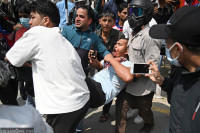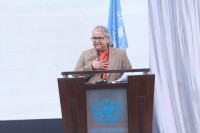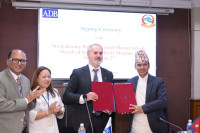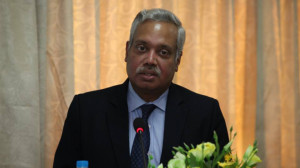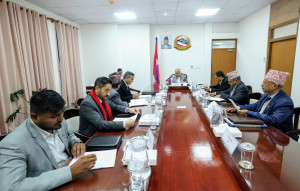National
Dengue hits most mountain districts before monsoon sets in
Experts warn of major outbreaks in high-altitude regions where health facilities remain ill-equipped.
Post Report
Seventeen out of 21 mountainous districts have reported dengue cases since January.
The Four mountainous districts that have yet to report cases of dengue infections are Rasuwa, Manang, Dolpa and Humla.
According to data from the Epidemiology and Disease Control Division, 71 districts have already reported dengue infection this year. The remaining two districts that have yet to report dengue cases are Dhanusha and Mahottari in Madhesh province.
“Multiple studies show that vectors spreading the dengue virus have been shifting to hill and mountain regions,” said Dr Sher Bahadur Pun. “Next massive outbreak of dengue virus could occur in mountain districts, and health facilities in those areas are not prepared to handle a spike in cases.”
So far, six districts of Madhesh have reported only 14 cases of dengue, whereas the mountain district of Gorkha has reported 27 cases, followed by Sankhuwasabha 20 cases, Bajhang with 11 cases, and Ramechhap 10. Experts say this indicates the vector spreading the deadly diseases is gradually shifting towards hill and mountainous regions.
Dengue is a viral disease transmitted by female Aedes aegypti and Aedes albopictus mosquitoes. According to the World Health Organisation, the same vector also transmits chikungunya, yellow fever, and the Zika virus.
The Epidemiology and Disease Control Division said that over 1,100 people from 71 districts have tested positive for the dengue virus since January. All three districts of the Valley—Kathmandu, Lalitpur, and Bhaktapur—have reported cases, and Kathmandu reported the highest number of positive cases.
Since dengue became endemic in Nepal years ago, meaning people get infected throughout the year, health officials no longer classify it as an outbreak of a deadly virus.
At least 15 people died, and 41,865 others were infected in 2024 as the virus spread to 76 districts. In 2023, 88 persons died and more than 54,000 were infected by the virus, which had spread to all 77 districts. At the time, hospitals in Kathmandu Valley were overwhelmed with dengue patients, and pharmacies had run out of paracetamol, the most widely used medicine to treat fever.
Experts say reported cases may represent only a small fraction of the true scale of infection, as around 90 percent of the infected people are asymptomatic, and many deaths and infections often go unreported.
Many people infected with dengue show mild symptoms, which do not need any treatment or can be managed with paracetamol at home.
Epidemiologists as well as virologists said the dengue virus has of late, emerged as a major public health problem in Nepal. They also said that despite thousands of people getting infected and scores dying from the disease, the authorities have not taken the threat seriously. They believe that this lackadaisical approach is responsible for the spread.
“Neither the health facilities of mountain districts are well-equipped, nor are health workers trained to deal with emerging problems, including dengue surges,” said Dr Baburam Marashini, a public health expert. “Despite being aware of the risk factors, we have not done our preparations accordingly.”
Experts warn that the rising temperatures, coupled with pre-monsoon rainfall, provide ideal breeding conditions for dengue-carrying mosquitoes. They say that unless the general public is made aware of the problem and takes the threat seriously, the spread of the dengue virus will not lessen. They asked the authorities concerned to learn from past experiences while taking preventive measures.
Experts say a campaign should be launched to raise people's awareness of the risks of vector-borne diseases. A search-and-destroy drive should also be initiated to contain the spread of virus-spreading vectors.
Dengue-transmitting mosquitoes breed in clean water and bite people in daylight. Uncovered water tanks and discarded objects such as plastic cups and bottles could be breeding grounds for dengue-carrying mosquitoes.
According to doctors, mild to high fever, severe muscle pain, rashes, severe headache and pain in the eyes are some symptoms of dengue. Doctors advise those with these symptoms to seek immediate treatment. While there is no specific cure for the disease, early detection and access to proper medical care can lower fatalities.
Nepal reported its first dengue case in a foreigner in 2004 in Chitwan district. Since then, an increasing number of dengue infections, including major outbreaks, have been reported from many districts.
The World Health Organisation says there is no specific cure for severe dengue, but early detection and access to proper medical care can save lives.




 13.12°C Kathmandu
13.12°C Kathmandu